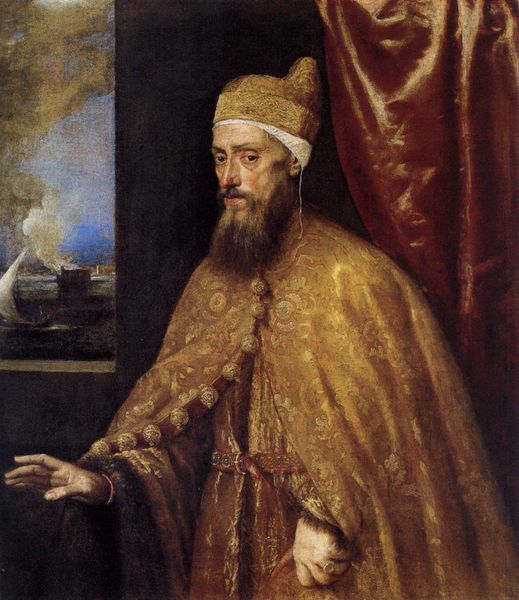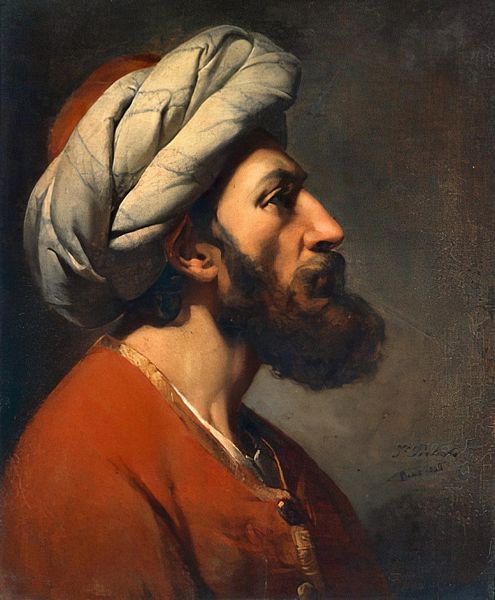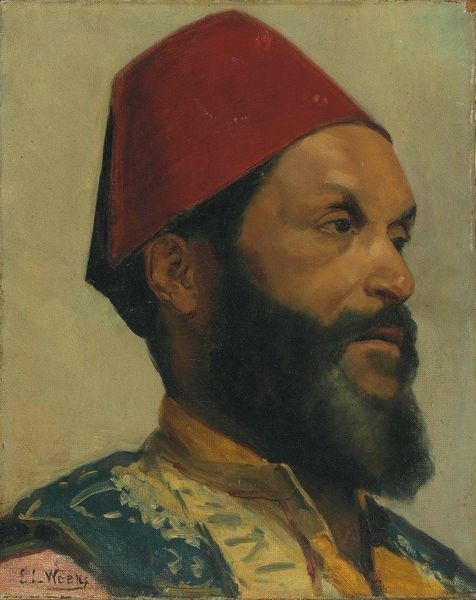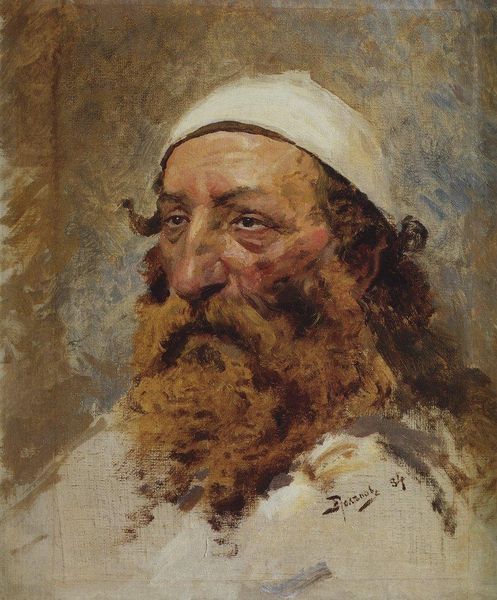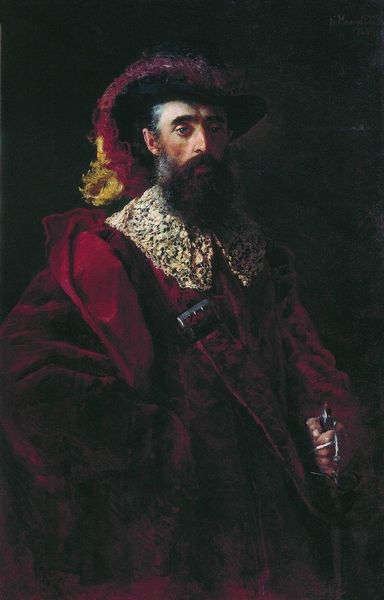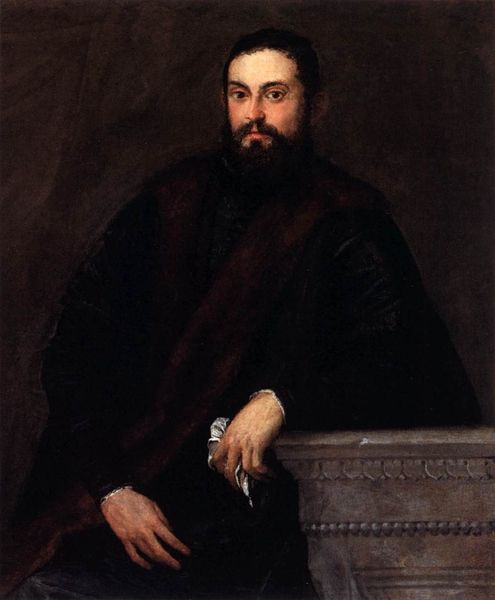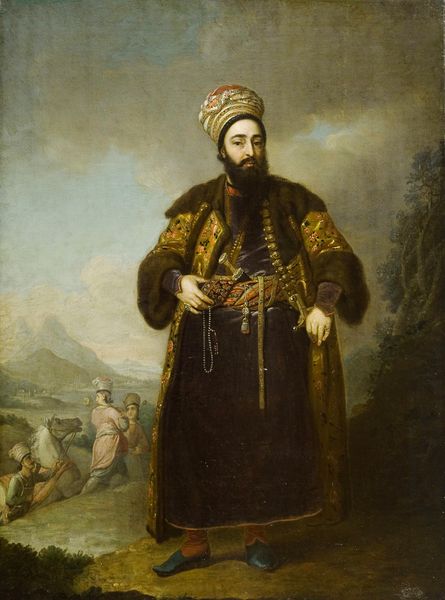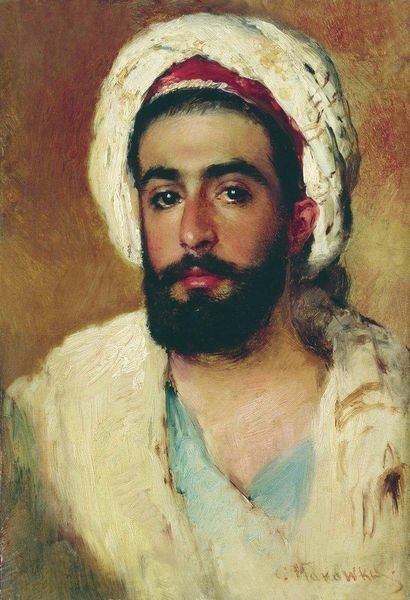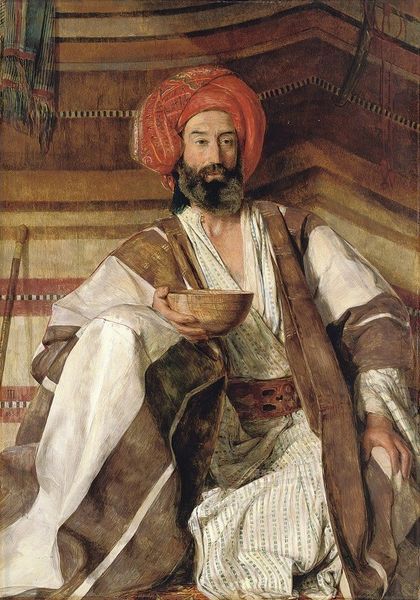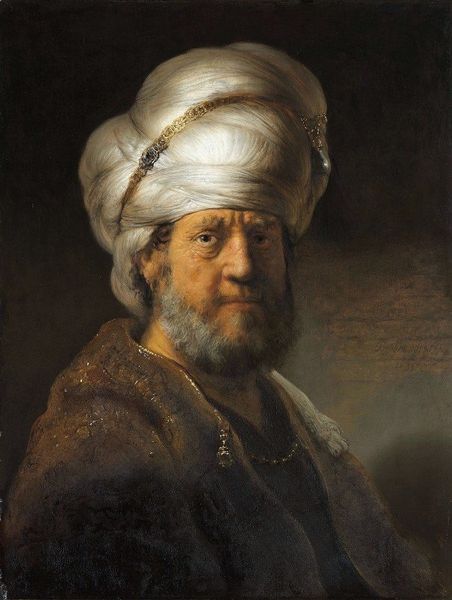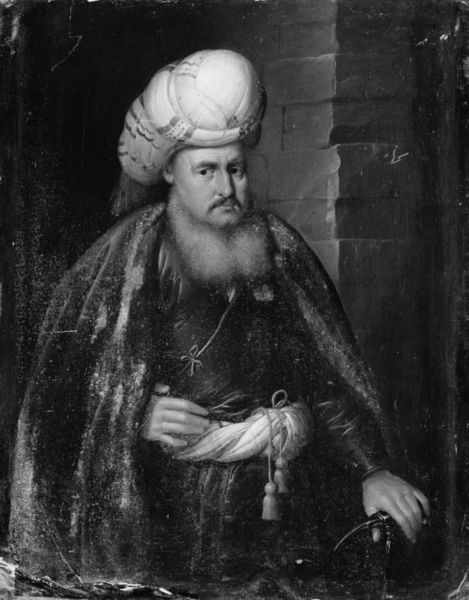
painting, oil-paint
#
portrait
#
head
#
portrait
#
painting
#
oil-paint
#
portrait reference
#
portrait head and shoulder
#
romanticism
#
animal portrait
#
animal drawing portrait
#
portrait drawing
#
facial portrait
#
portrait art
#
fine art portrait
#
realism
#
digital portrait
Copyright: Public domain
Curator: Ilya Repin painted "The Sitter's Head" sometime in the second half of the 19th century. It's an oil-on-canvas work. Editor: Immediately, I'm struck by its unfinished quality—the background melts away, and the figure emerges almost sculpturally. It's quite arresting. Curator: Observe how Repin uses light to define form. The play of light and shadow across the sitter’s face and turban gives volume and a sense of dynamism to what could easily be a static portrait. Editor: It speaks to Orientalism, the West's fascination with and often distorted representation of the East, doesn't it? What do we know of the sitter's identity and the circumstances of this painting? Curator: Regrettably, definitive details about the sitter and the specific historical context of its creation seem to be scarce, eluding precise classification or identification. We have no known record, leaving open various interpretations about who is pictured in "The Sitter's Head". Editor: Yet, doesn’t this ambiguity itself invite us to interrogate power dynamics embedded in such portrayals? Without the sitter's voice, whose narrative are we truly engaging with? Are we, as viewers, complicit in a Western gaze that objectifies the East? Curator: One could equally contend that the artistic intention transcends mere objectification. Repin's brushwork, in its bravura and immediacy, underscores an aesthetic pursuit independent of narrative burden, prioritizing the interplay of color and texture. The rosy cheek and beard, in contrast with the turban's dull hues, create balance. Editor: But artistic choices never exist in a vacuum. Even if unintentionally, this composition reinforces a binary – the artist, presumed Western and empowered, depicting an Eastern subject stripped of agency. That red garment could symbolize something other than a mere costume element, speaking to a more symbolic rendering of social power at the time of the painting's making. Curator: I can see your point and how that perspective shifts our understanding. Nevertheless, focusing on the materiality – the tangible presence of paint – provides invaluable insight, if one resists simply overlaying today's sociopolitical consciousness over historical works that inevitably are entangled in the cultures and times in which they were produced. Editor: Ultimately, that intersection – between formal analysis and critical awareness – is where meaningful understanding lies. These brushstrokes speak to a person captured in a moment of time; a representation, yes, but also, perhaps, a shared humanity, despite the barriers.
Comments
No comments
Be the first to comment and join the conversation on the ultimate creative platform.
